I’ve lived a short train ride from Philadelphia for a few years now, and did not visit until this year, on the event of my birthday. I’ve driven through it, but I never made it a destination. It’s a strange, sprawling city, mostly kept shorn of skyscrapers, thanks to a gentleman’s agreement that no building be taller than the statue of William Penn atop City Hall. This held until 1987, and now only 11 buildings exceed the 548 feet of Penn’s pate.
One small building of note is owned by the College of Physicians of Philadelphia, and houses several collected of pathological anatomy that they’ve amassed over the years, known as the Mütter Museum.
Disturbing to some, delightful to others, it includes 139 skulls collected to disprove the racial theory of phrenology, and a large collection of specimens from conjoined twins who died at birth, to megacolons the size of engorged boa constrictors. There is also a plaster death cast of the bodies of conjoined twins Chang and Eng, who shared a liver, and died together. The glass case I found myself lingering at the longest displayed the skeleton of a 7’5” tall human giant alongside that of Mary Ashberry, who had achondroplasia and was 3’6” tall; she died during childbirth, as her child’s skull was too large for her pelvis. In between Mary’s bones and the unknown giant is the skeleton of a nameless, average person.
You may find it morbid, or gruesome, a sideshow meant to tickle our fears of mortality and serve as curiosities or memento mori, but it is much more than that. It collects the range of human anatomical experience; the journeys of people we do not often see. Some whose lives ended before they were born, some cut short, others full and vibrant, affected by fates which could be ours.
The museum could do with better signage; there are stories here, but they must be left to docents who give tours. We could have used one. One story that I did not know until long after I left, was that of the skeleton of Harry Raymond Eastlack, Jr.
Harry died of fibrodysplasia ossificans progressiva, and donated his body to science. The genetic disease causes the body to grow bone in inappropriate places as a reaction to minor damage to bone, tendon, and joints, creating a sort of second skeleton around the other, fusing vertebrae and joints, and making the person unable to move. His skeleton looks like armor, and seeing it in person, it is strangely beautiful until you consider the pain it must have caused, and the inability to move. Harry Eastlack died of pneumonia at age forty, immobilized in bed, after years of only being able to move his eyes, lips, and tongue. His condition was exacerbated by misdiagnosis and attempted surgeries which sped his ossification and eventual demise.
It sounds rather gruesome to display the skeleton of a man who died of an incurable disease, but Harry was not a curiosity for Carol Orzel, who also had fibrodysplasia ossificans progressiva. She met Harry when she and others who have the disease visited his skeleton at the Mütter Museum. She was inspired to ask that her own skeleton rest beside his when her time came.
Her wish was granted.
There is no photography allowed inside the museum, but this is from the article linked above. There you can see Carol Orzel in life, as well.
If you need a breath, the museum has a garden of medicinal plants in a spacious courtyard, which is quite nice to walk around after spending time with the bones and jars of formaldehyde.
The museum is not as salacious as it’s made out to be by gorehounds and the morbidly obtuse. As I said, it could use a better interpretive narrative to its displays, but they are not sideshows. I didn’t take time to peruse all the drawers of specimens and slides, which apparently contain teratomas, tumors of presidents and posthumous excisions from assassins. There is a display of slides taken from Albert Einstein’s brain, but I did not gawk. Einstein wished to be cremated “so they will not come and worship my bones,” and while the specimens—taken by a physician at the University of Pennsylvania after his death—were given permission by Einstein’s brother after the fact, it felt disrespectful to Albert Einstein, in my opinion. Harry Eastlack and Carol Orzel asked to be studied; he did not.
There is more controversy at the Mütter, from the ableist perspective that makes us cringe at the afflictions, to the manner in which bones were collected for museums in the past, some which involved robbing graveyards of Native Americans. The museum is struggling to find its place, and recently removed much of its online content. There is fear that it will self-censor disturbing exhibits, when what is needed is context. To present the remains of people… as people, and not objects or monsters to gawk at. There is a petition to express concern with a museum of human pathology trying to appeal to a larger audience by hiding away its more disturbing exhibits.
If you visit Philly, after you see Rocky and the cracked bell and Ben Franklin’s grave, stop by the Mütter Museum to see the range of human experience. And if you haven’t lost your appetite, skip Geno’s and Pat’s. Go to Carmen’s in the Reading Terminal Market and get the Franklin1, or really, go anywhere else. The two famous ones are forgettable except for the lines.
It’s a classic Philly cheesesteak with your choice of cheese and toppings, plus Philly cream cheese slathered on the roll. And the meat is seasoned, until the tourist crap.




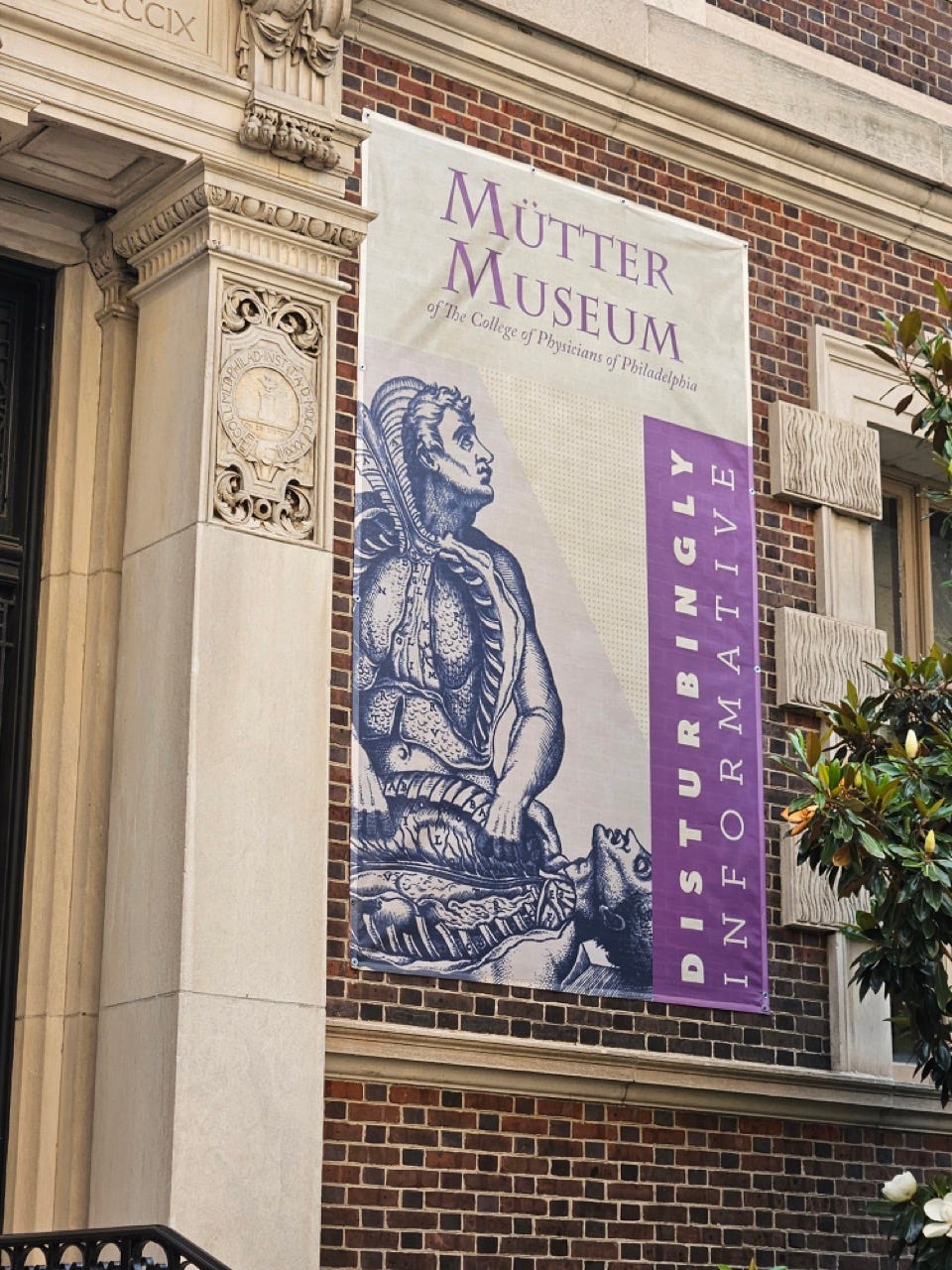
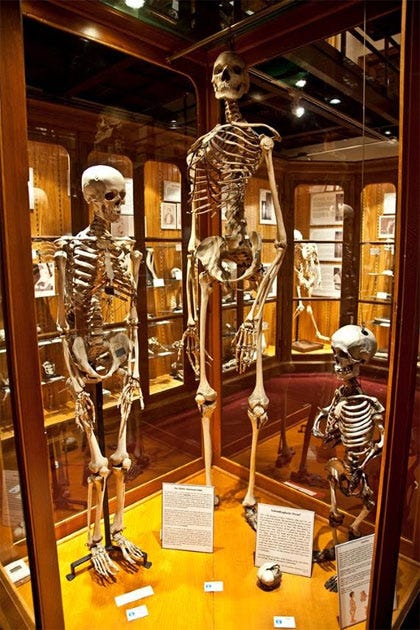
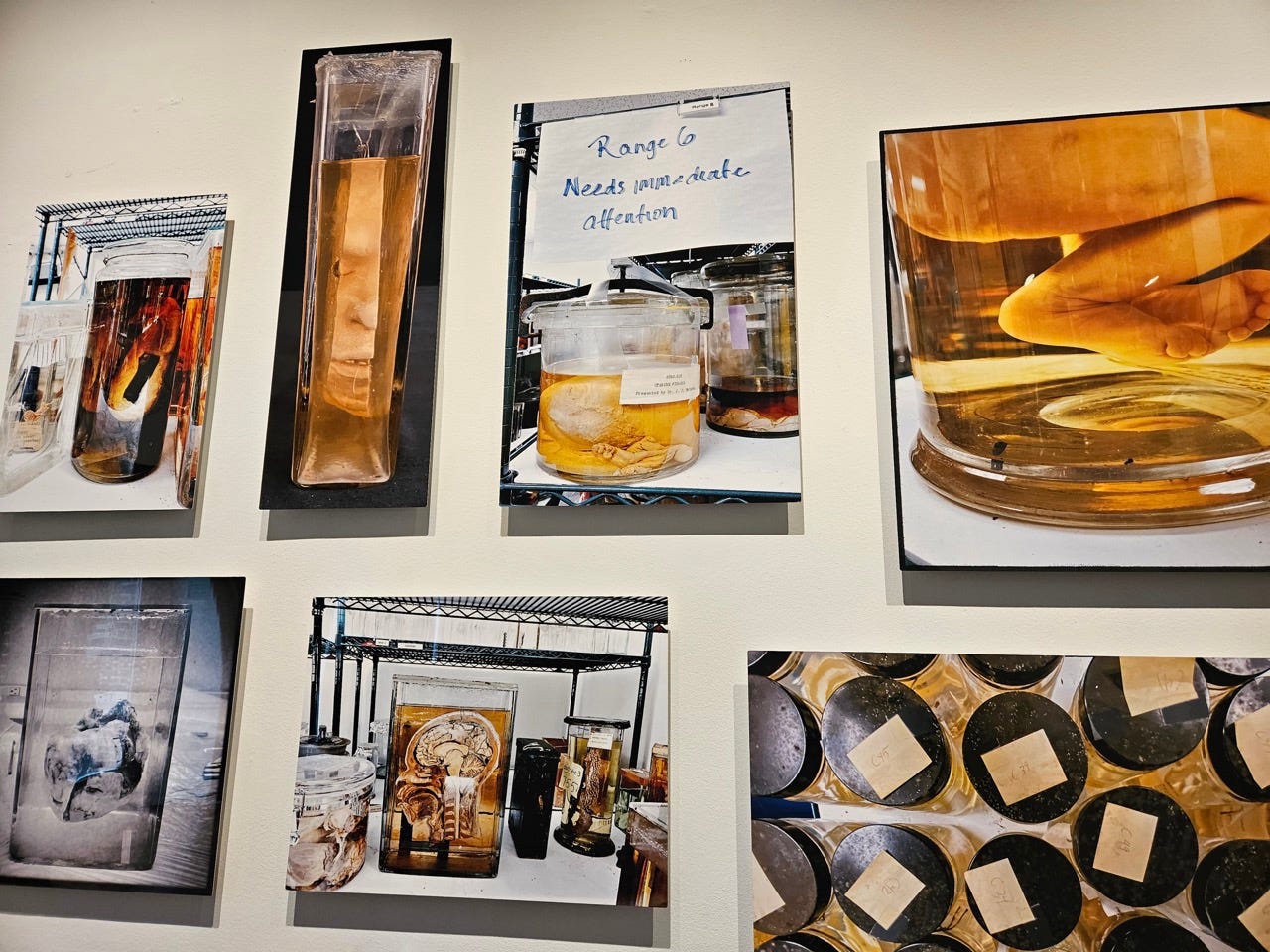
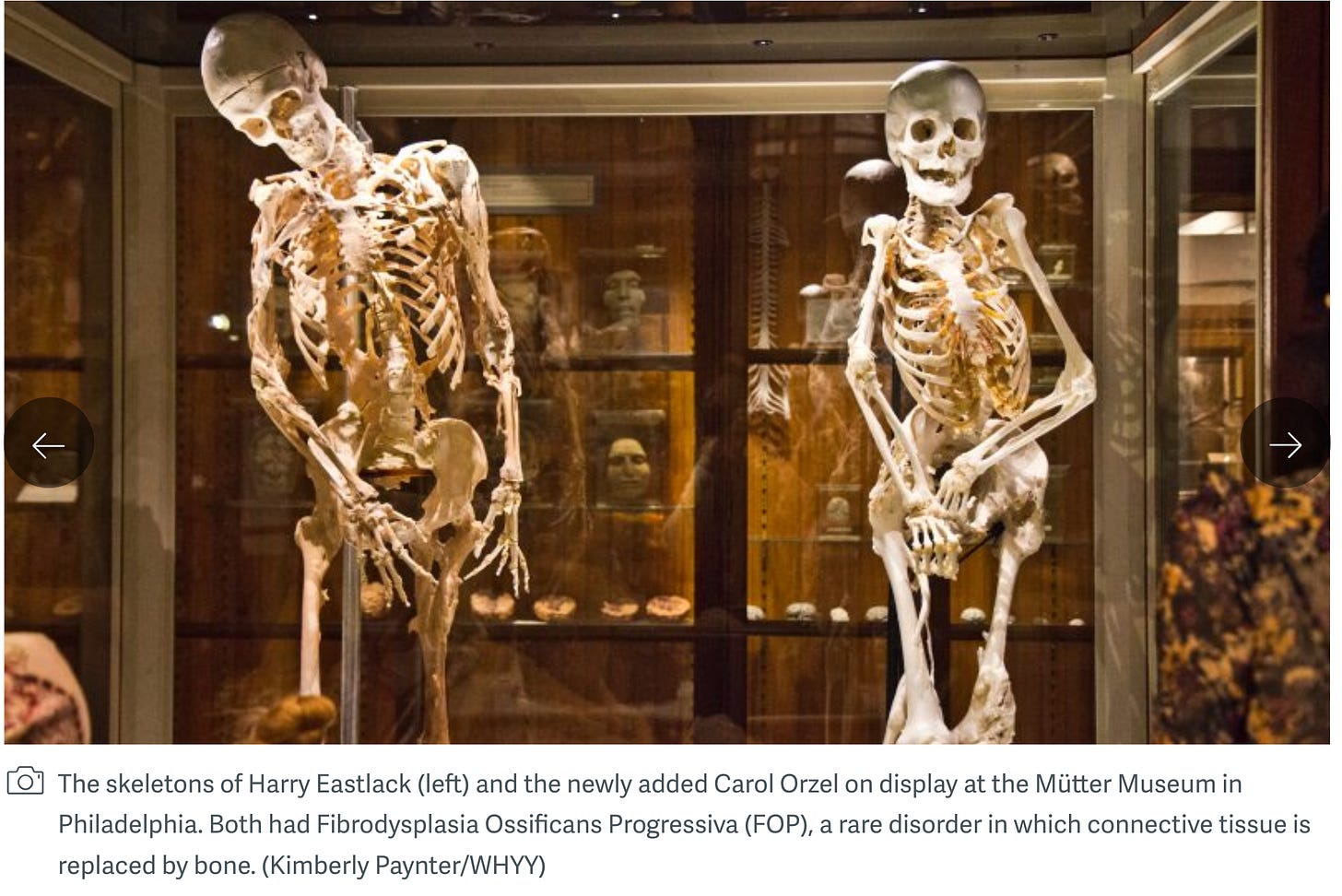
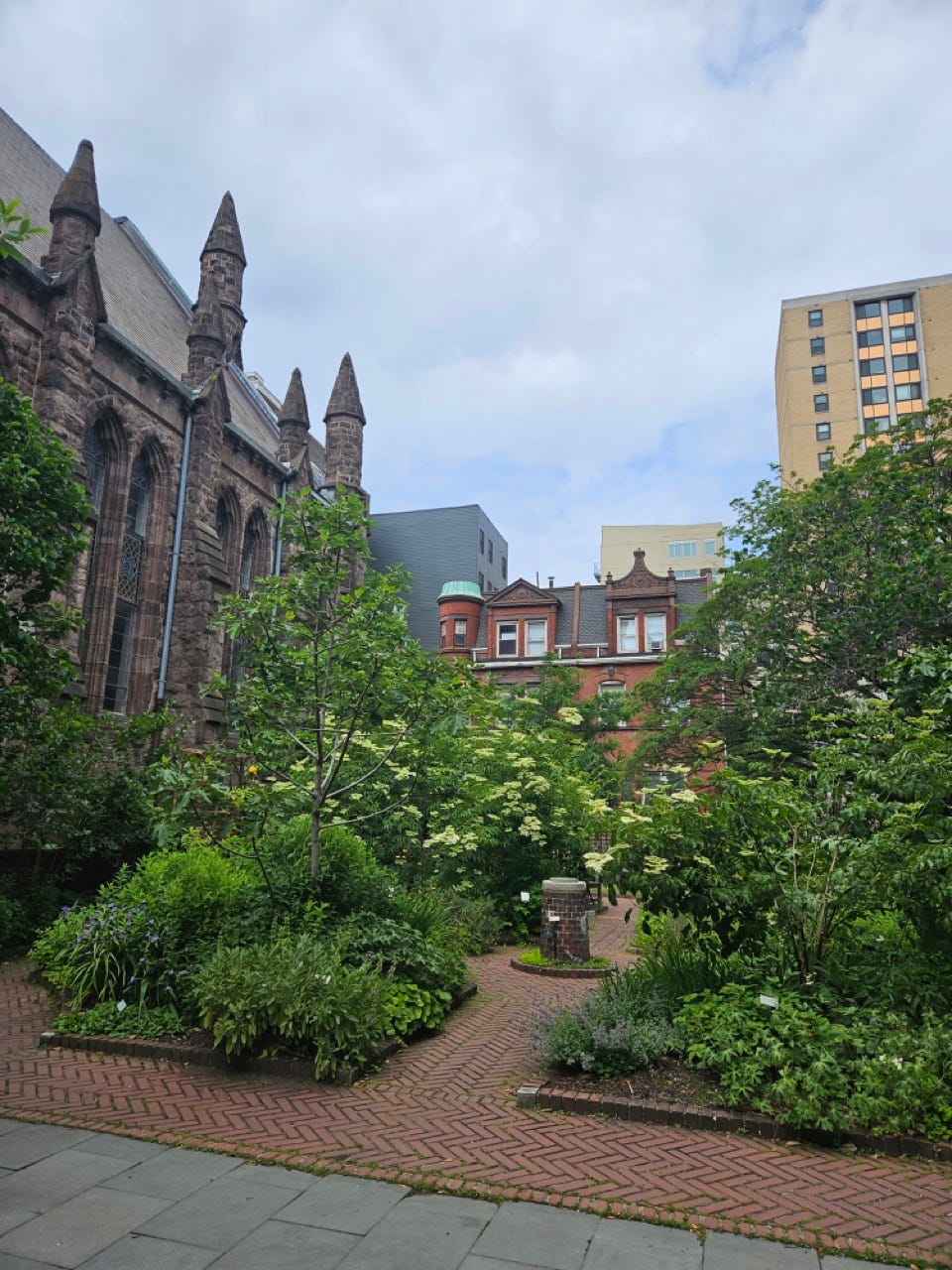
This is such a helpful response to a difficult museum & topic. When a new Paleolithic branch is announced because scientists have discovered a particularly large or differently-skulled specimen or whatever, i’ve often wondered if it might not be a new branch at all but just part of the range of human expression. There are so many ways to be human and I love your suggestion of context to help us work through the history & issues.
Lots of museums seem to be going through a phase of exploring their complicated pasts. Or at least that's true for a couple I visited recently. Birmingham museum invites visitors to think carefully about questions of repatriation and so on, whilst also having conversations with the various communities thier collections represent.
Sounds like the Mutter has got some way to go here - and like it's got something of worth that would be a shame to lose.